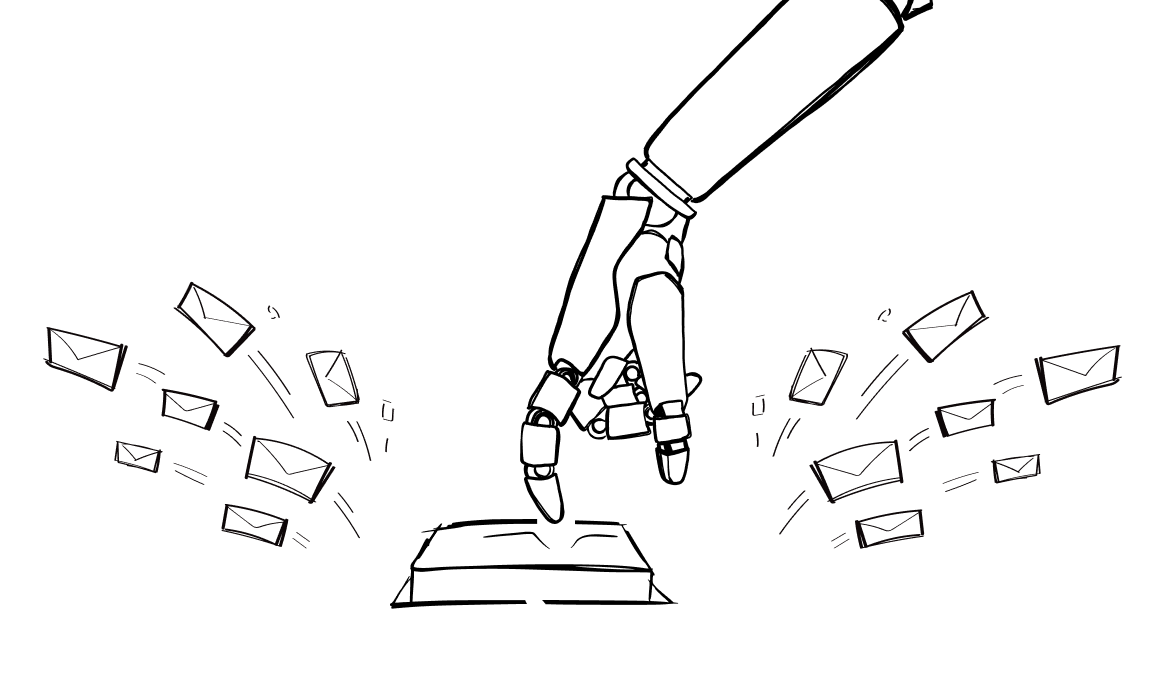AI can be a curse and a blessing.
It’s a blessing when you fully understand how to use it strategically, but it becomes a curse when used carelessly or without thought. This is especially true in email writing – the difference between success and failure lies in how well you leverage the tool.
AI is a powerful ally for crafting emails that can save time, improve efficiency, and deliver professional results. But only when it’s used wisely.
In this article, we’ll show you exactly how to create AI-generated emails that connect, engage, and achieve your goals – so it’s your blessing, not your curse.
Let’s get started!
What are AI generated emails?
AI-generated emails are messages created with AI-powered tools like ChatGPT, or a dedicated AI email generator. These tools make it easier to write emails quickly and professionally, no matter the purpose.
An AI email generator helps by crafting emails that match your tone and goals. It can handle everything from subject lines to the main content, so you don’t have to stress over what to say.
Why don’t AI generated emails typically work?
Using AI-generated emails saves time and ensures your messages are always on point. However, it’s not always the best idea.
Lack of segmentation
When emails don’t feel personalized, they appear generic and fail to connect. For example, sending the same email to new customers and loyal clients won’t work. Without segmentation, the message may not resonate with either group. This can hurt your email communication and make it less effective.
Segmentation adds a personal touch to professional business emails, making them more engaging and relatable. While AI can handle email writing tasks quickly, it often needs guidance to create emails that feel like personal communication.
Poor personalization
In email marketing, personalization goes beyond just adding a name to the subject line. You must write a message relevant to the recipient’s needs, preferences, or interests.
AI tools are great at creating generated content, but without the right input or strategy, they can produce generic or out-of-touch emails. You wouldn’t write the same email to a new lead and a long-time customer, right?
Effective personalization makes emails more engaging and increases the chance of a positive response. By combining AI tools with smart personalization techniques, you can turn generated content into impactful messages that connect with your audience.
No followups
In business communications, a single message often isn’t enough to achieve your goal. Without follow-ups, your efforts might go unnoticed, making it harder to maintain engagement.
Follow-ups add value to personal correspondence – you show interest and build trust. Whether it’s a reminder, additional details, or a polite nudge, follow-ups are crucial to crafting professional emails.
AI tools might generate a strong initial professional email, but they often miss the importance of a well-timed follow-up. This gap can make your outreach feel incomplete and less effective.
Too many emails in a sequence
Another reason an AI-generated email strategy might fail is to send too many emails in a single sequence. While staying in touch is important, overwhelming your audience with constant messages can annoy them and lead to unsubscribed.

An email writer may craft excellent messages, but recipients might lose interest or stop opening your emails if the frequency feels excessive. Instead of building a connection, you risk damaging trust. Focus on quality over quantity.
Sending emails too close to each other
Even the best AI generated email won’t perform well if it looks like spam. People need time to process your message, and constant follow-ups can be pushy.
Spacing out your emails gives your audience room to engage and respond. An email writer can help create timely and respectful emails, but it’s up to you to schedule them wisely. Focus on timing and use relevant words that resonate with your recipients without overwhelming them.
How to create AI generated emails that work
AI-generated emails can save time and streamline your email strategy, but for them to truly succeed, they need thoughtful planning.
Let’s look at practical steps to ensure your AI-generated emails drive results!
Set clear campaign objectives
Before using an AI email writer to create your email strategy, you need to define your campaign objectives. Knowing your goal is the first step to success. Are you trying to generate leads, nurture existing ones, or engage your audience? Each objective requires a unique approach when you craft emails.
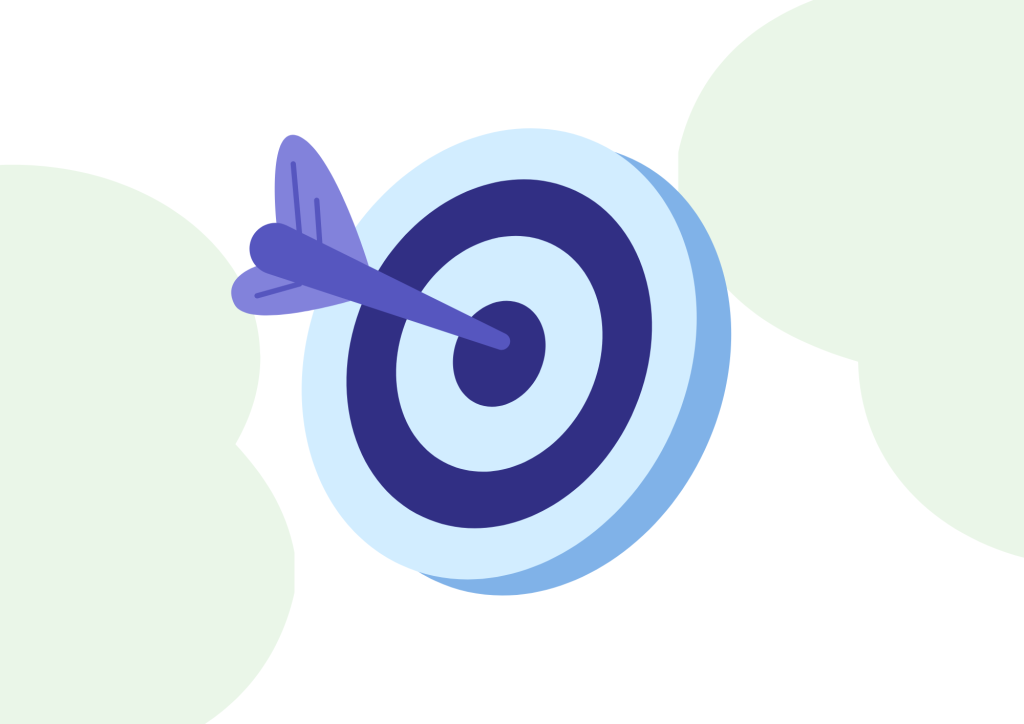
For example:
- Generating leads: Focus on grabbing attention with compelling subject lines and clear calls to action.
- Nurturing leads: Provide value by sharing helpful insights, tips, or solutions to keep them interested.
- Engaging your audience: Use personalized content that resonates with their preferences to build stronger connections.
When your objectives are clear, an AI email writer can easily craft emails tailored to your needs. This makes your campaign more focused, impactful, and aligned with your goals. A clear purpose leads to better results and stronger relationships with your audience.
Personalize each email
Personalization isn’t just a nice touch – it’s a must for effective communication. Check out these stats:
- Personalized emails increase the effectiveness of your marketing.
- 63% of marketers report that personalization results in higher conversion rates.
- 65% of marketers include subject line personalization in over half of their e-mail marketing campaigns.
However, personalizing this at scale can feel overwhelming.
That’s where Woodpecker comes in. When connected to your CRM, Woodpecker makes it easy to personalize every email, even for large campaigns. It automatically pulls details like names, job titles, or past interactions directly from your CRM and inserts them into your emails.
Beyond basic personalization, Woodpecker can segment your audience, ensuring each email speaks to their specific needs or preferences. It saves time on repetitive tasks while helping you build genuine connections.
With the right tools and strategy, you can send personalized emails that stand out and drive results – all without the hassle!
Start off with a strong subject line
The subject line is the first thing your reader sees – it’s your chance to make a great first impression. A strong subject line should be short, compelling, and benefit-driven. It must grab attention and make the recipient want to open your email.
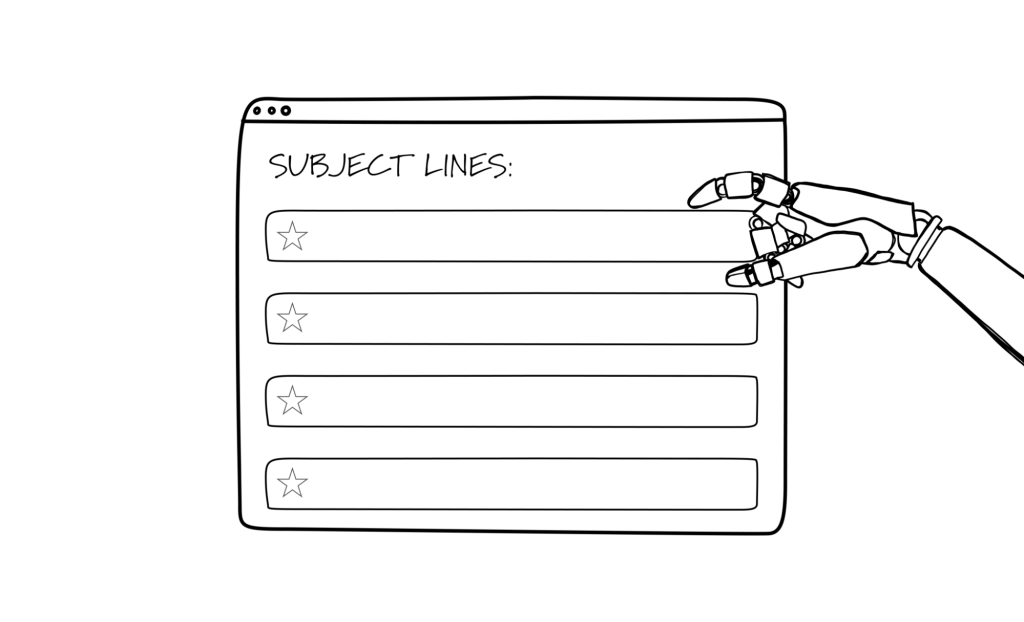
For example:
- Instead of “Our Monthly Newsletter,” try “Boost Your Productivity in 5 Minutes.”
- Instead of “Special Offer,” try “Save 20% Today on Your Favorite Tools.”
Once you’ve crafted a few options, split test your subject lines. Send different versions to smaller groups and analyze which one gets more opens. It’s an easy way to see what resonates best with your audience.
Create conversational content
After a strong subject line, your email content needs to keep the reader engaged. To do this, write in a conversational tone. Imagine you’re talking to a friend, not delivering a lecture.
Avoid:
- Sounding robotic – people want to connect with a human, not a machine.
- Industry jargon – overly technical terms can confuse or bore your audience.
- Complex expressions – if it’s not something your audience uses in everyday conversation, simplify it.
Instead, focus on clarity and relatability. Use language that’s easy to read and fits your audience’s style. For example, instead of saying, “Our proprietary solution enables seamless integration,” try, “We make it easy to connect your tools, so you save time.”
By combining strong subject lines and conversational content, you create emails that feel personal, engaging, and worth reading.
Highlight benefits, not features
Features tell recipients what something is, but benefits show them how it can make their life easier, better, or more enjoyable.
For example:
- Instead of saying, “Our app tracks your expenses,” say, “Save hours every month by effortlessly organizing your finances.”
- Instead of, “Our tool integrates with your CRM,” say, “Keep all your customer data in one place for smoother communication.”
Highlighting benefits makes your email more relatable and shows recipients why your offer is valuable to them. It addresses their needs and solves their problems, not just lists what you do.
Optimize your emails for mobile devices
Most people check their emails on their phones, so it is crucial to ensure your emails look great on smaller screens. Keep your messages short, easy to read, and visually clean.
Here are some tips:
✅ Use short sentences and paragraphs for better readability.
✅ Include a clear call-to-action (CTA) that stands out.
✅ Avoid large images or overly complex designs that can take too long to load.
✅ Use a mobile-friendly font size and buttons that are easy to tap.
Before hitting send, test your emails across devices. Open them on both phones and desktops to ensure everything looks polished and professional. A mobile-optimized email increases the chances of engagement and helps you connect with your audience wherever they are.
Strong subject lines, conversational content, benefit-focused messaging, and mobile optimization help you create emails that feel personal, engaging, and ready to deliver results!
Include a clear CTA
Every email needs a clear call-to-action (CTA). Think of it as the “next step” you want your reader to take. Whether clicking a link, signing up for something, or downloading a resource, your CTA should be direct, easy to find, and compelling.
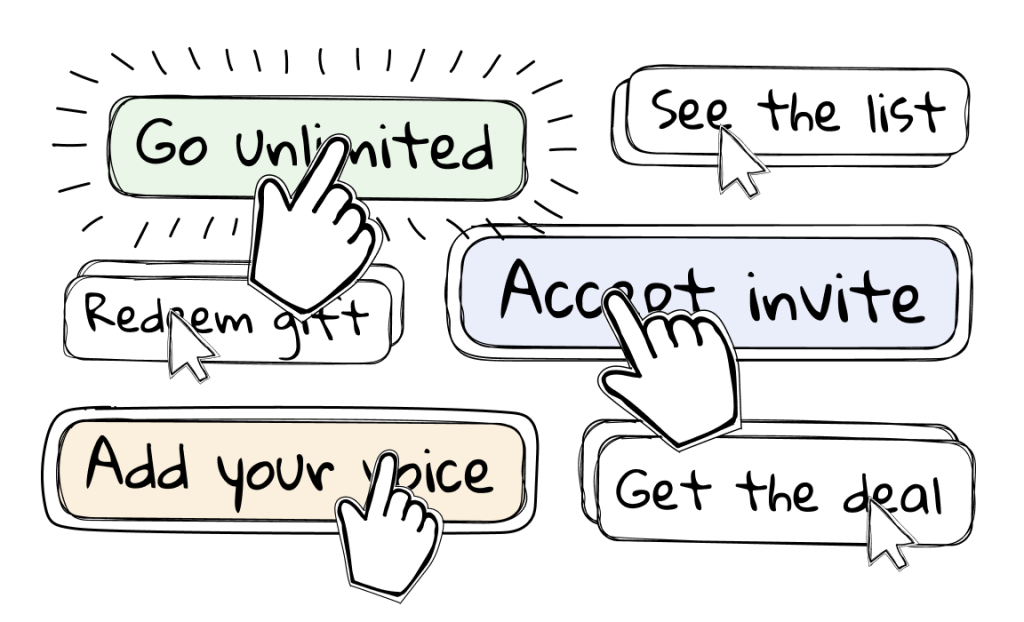
For example:
- Instead of “Click here,” try “Get started today.”
- Instead of “Learn more,” try “Discover how it works.”
👉 Check out more impactful CTA examples here.
Place your CTA where it’s easy to spot, near the top of the email or at the end. Keep it short, action-driven, and benefit-focused to guide your readers effortlessly.
Split test your emails
Not sure what works best for your audience? Split testing – also known as A/B testing – is the way to go. Test different subject lines, email lengths, CTAs, or even the tone of your content.
With tools like Woodpecker, you can run split tests efficiently. Compare a short email vs. a longer one, test CTAs like “Try Now” vs. “Start Free Trial,” experiment with different tones: casual vs. formal, and more!
The results can reveal what resonates most with your readers, helping you create emails that perform better every time.
Comply with relevant laws
When sending emails, staying compliant with laws like GDPR, CAN-SPAM, or others relevant to your audience is a must. This means:
- Getting consent before adding someone to your email list.
- Including an easy way to unsubscribe.
- Avoiding misleading subject lines or content.
Following these rules helps avoid penalties while keeping your email practices professional and ethical.
Use analytics to refine campaigns
Understanding how your emails perform is the key to improving them. Tools like Woodpecker provide detailed analytics showing business-essential metrics like open rates, click-through rates, and response rates.

These insights help you see what works and what doesn’t, for instance
- Low open rates? Try tweaking your subject lines.
- Poor click-through rates? Focus on making your CTAs more engaging.
- Minimal responses? Adjust your tone or content length.
Woodpecker’s dashboard makes it simple to track performance and refine your strategy in real-time. With these analytics, you can make data-driven decisions to improve every email you send.
Avoid over-automation
Automation is a powerful tool, but overusing it can make your emails feel robotic and impersonal. Emails that lack a human touch can disengage readers and even harm your brand.
The key is balance. Use automation for repetitive tasks, but always review your content to ensure it feels authentic. Tools like Woodpecker let you automate while keeping control. You can personalize messages, add human touches, and ensure every email resonates with your audience using email templates with dynamic fields.
A little oversight goes a long way in turning automated emails into genuine, engaging communication.
Send AI-generated emails with Woodpecker
Create AI-generated emails that feel personal and professional, and send them with Woodpecker.
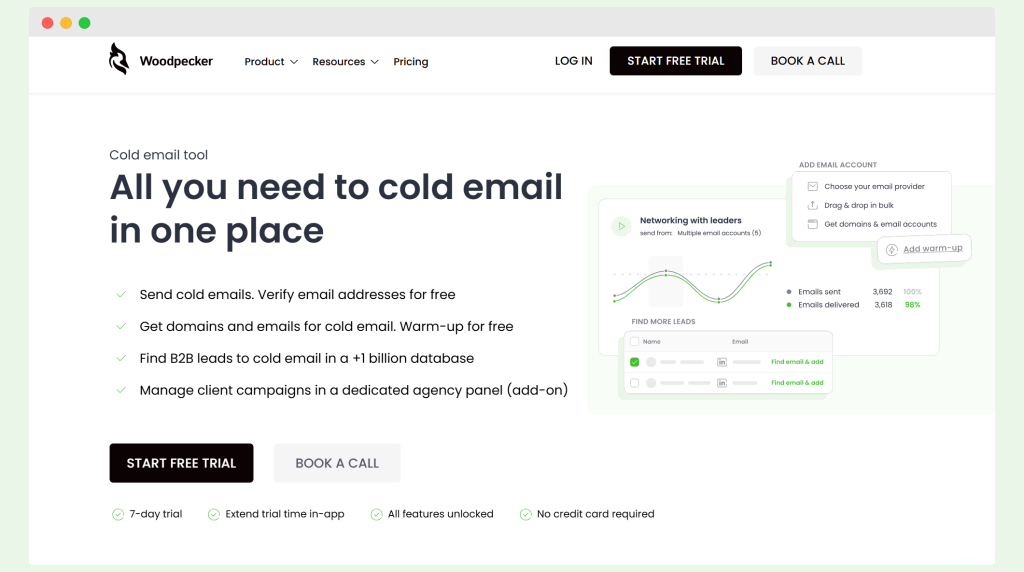
It is a cold email tool that helps you automate sending emails to the people you want to reach. With features like automated follow-ups, real-time analytics, and CRM integration, it’s designed to make your email campaigns even smarter and more effective.
Whether you’re reaching out to leads, nurturing relationships, or engaging your audience, Woodpecker ensures every email hits the right note.
Conclusion
When used thoughtfully, AI can be a powerful tool for crafting engaging, effective emails. You can turn AI-generated emails into a powerful part of your email marketing strategy with a clear plan, conversational content, and tools like Woodpecker to refine your approach.
Don’t let AI be your curse— – make it your advantage! Try Woodpecker today and discover how smarter emails can lead to better engagement and more success.

